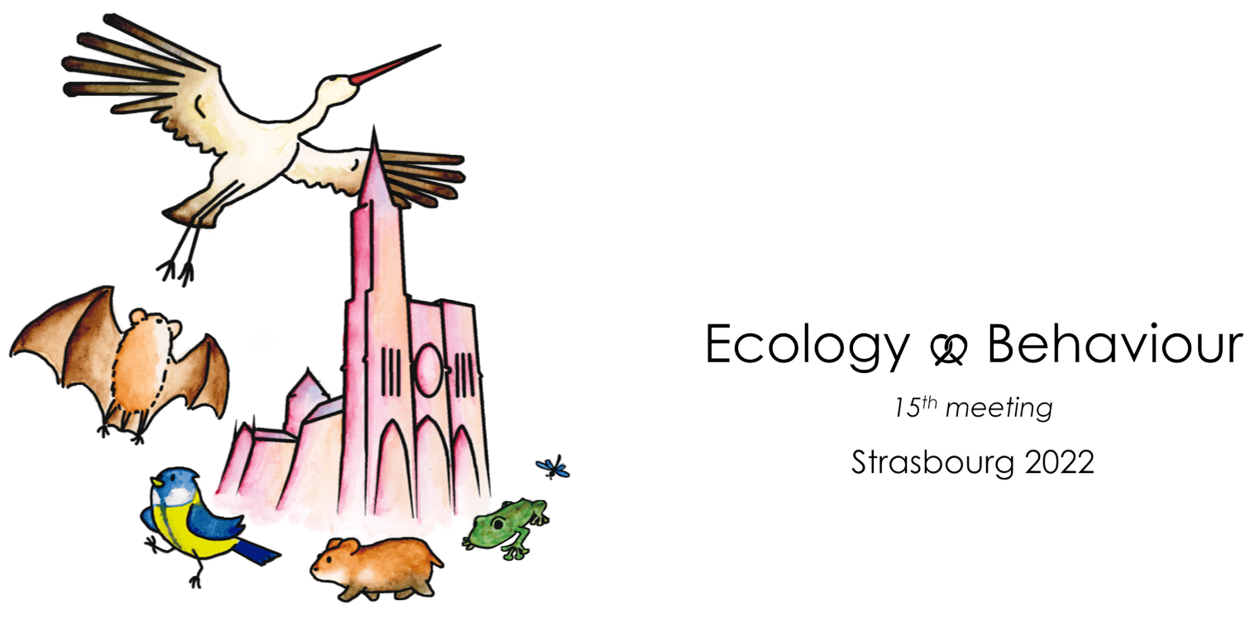
Keynote speakersCette page sera mise à jour au fur et à mesure avec les noms, photos et résumé de présentation des chercheurs invités. Les présentations seront en anglais, les résumés sont donc eux aussi laissés en anglais.
Jonathan Jumeau The Science of extinction : Road Ecology as an example Chercheur - Chef de projet environnement au Conseil Départemental du Bas-Rhin https://www.researchgate.net/profile/Jonathan-Jumeau
Jérémie Souchet Effects of high-elevation hypoxia and temperatures on embryonic development and juvenile performance in the viperine snake Phd in Ecology and Evolution of Reptiles - Laboratoire EDB – Université Paul Sabatier Toulouse III In the near future, climate change could lead to an increase in the average temperature on the Earth's surface of 1°C to 6.5°C compared to the average temperature estimated between 1986 and 2005. This is likely to increase the risk of species extinction or change species ranges by impacting the reproductive phenology and the migration of organisms, leading to a change in biodiversity patterns on a global level. Ectotherms, whose set of physiological and behavioural traits are dependent on environmental temperatures, will be further affected by climate change and will have to migrate to more favourable thermal zones, such as to high altitude. However, at higher altitudes, the decrease in the partial pressure of the air reduces the availability of oxygen. This new environmental constraint, high-elevation hypoxia, could limit organisms’ chances of colonizing these environments. In order to highlight the physiological responses to high-elevation hypoxia in the viperine snake, Natrix maura, a historical colonizer currently undergoing an upward range expansion, and to define its capacity to use mountain areas as a refuge in the context of climate change. we measured the effects of high-elevation hypoxia and the interaction it may have with temperature on development through monitoring embryonic metabolic activity and development rates. We also observed tin a favorable thermal environmenthe potential persistence of these effects on the performance and metabolism of juveniles. The results of these works suggest that, in the viperine snake, the plastic physiological responses of embryos to high-elevation hypoxia could facilitate, in a favorable thermal environment, the expansion of the altitudinal range through the maintenance of body phenotypes and physical performance of juveniles. https://www.researchgate.net/profile/Jeremie-Souchet
Alexandre Corbeau New technology for biodiversity monitoring, an example on albatrosses and their interactions with fisheries Engineer (PhD) in avian ecology and biomonitoring - Laboratoire Ecosystème-Biodiversité-Evolution (ECOBIO), Université de Rennes 1 - CNRS alexandre.corbeau@univ-rennes1.fr The new technologies have developed in a lightning way these last years. This has allowed an important development in ecology and the study of animal behaviour in their natural environment. Biologging has become essential. I will present an example of the use of biologging in the fundamental knowledge and study of the relationship between seabirds and fisheries, otherwise inaccessible, but also the use of these technologies for conservation and the direct fight against illegal fishing via the albatrosses as sentinels of the Austral Ocean. https://www.researchgate.net/profile/Alexandre-Corbeau
Valéria Romano Trading off information and infection: implications for social evolution IRD postdoctoral fellow, Institut Méditerranéen de Biodiversité et d'Écologie marine et continentale (IMBE), Aix-Marseille University/Avignon University/CNRS/IRD, France. Individual decisions about with whom and how frequently to interact are flexible and responsive to the divergent socio-environmental pressures they face. Yet, the feedback loop between individual behaviour and population-level process has been poorly investigated. In this talk, I will start by exploring how social networks mediate information and pathogen transmission in a vast range of social species (fruit flies, primates and humans). I will then look at the mechanisms of social phenotypic plasticity and finish by discussing the trade-off between information and pathogen spread in animal societies. https://www.researchgate.net/profile/Valeria-Romano
Pauline Vuarin Ecological implications of individual physiological strategies in free-ranging mammals Laboratoire de Biométrie et Biologie Evolutive - UMR CNRS 5558, Université Claude Bernard Lyon 1 Physiology mediates the relationship between life history and the environment. Free-ranging animals are constantly facing environmental fluctuations, either predictable or not. Since physiological processes control how organisms respond to variations in their environments, it is crucial to incorporate them to understand the mechanisms underlying adaptive responses. This will be illustrated through two examples from field studies on small mammals inhabiting constraining environments. The first one will focus on the regulation and flexibility of energy saving mechanisms in tropical heterothermic primates. Mouse lemurs (Microcebus murinus) can enter periods of hypometabolism and hypothermia, also referred to as daily torpor, to overcome seasonal food shortage. Although torpor use is quickly adjusted according to thermal conditions and food availability, its flexibility remains constrained by body condition. Heavier individuals enter deeper torpor, and the lightest ones are forced to remain normothermic, suggesting that fattening determines individual’s ability to rely on torpor to survive the dry season. The second example will focus on the relationship between glucocorticoids and fitness in annual rodents. African striped mice (Rhabdomys pumilio) must first survive the dry season to reproduce during the next breeding season. Elevated basal corticosterone levels were associated with disappearance risk in light, but not heavy individuals. High levels of corticosterone may increase mortality risk of small individuals through allostatic overload, or alternatively trigger their dispersal, a risky behavior. Both cases highlight that different physiological strategies co-occur within natural populations, that can have important implications for individual fitness as they are likely to determine breeding success and survival. |
| Personnes connectées : 2 | Flux RSS | Vie privée |

|
